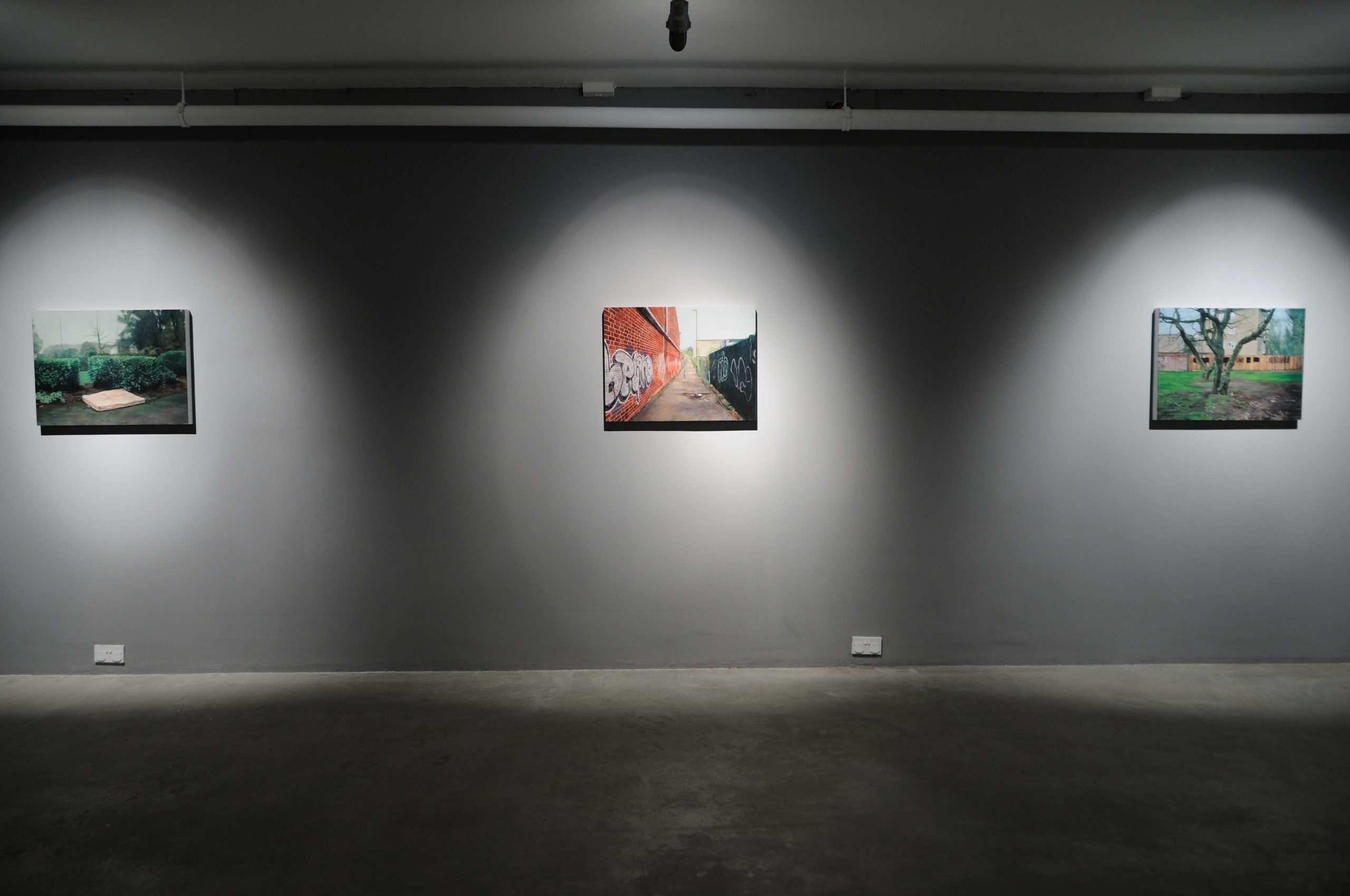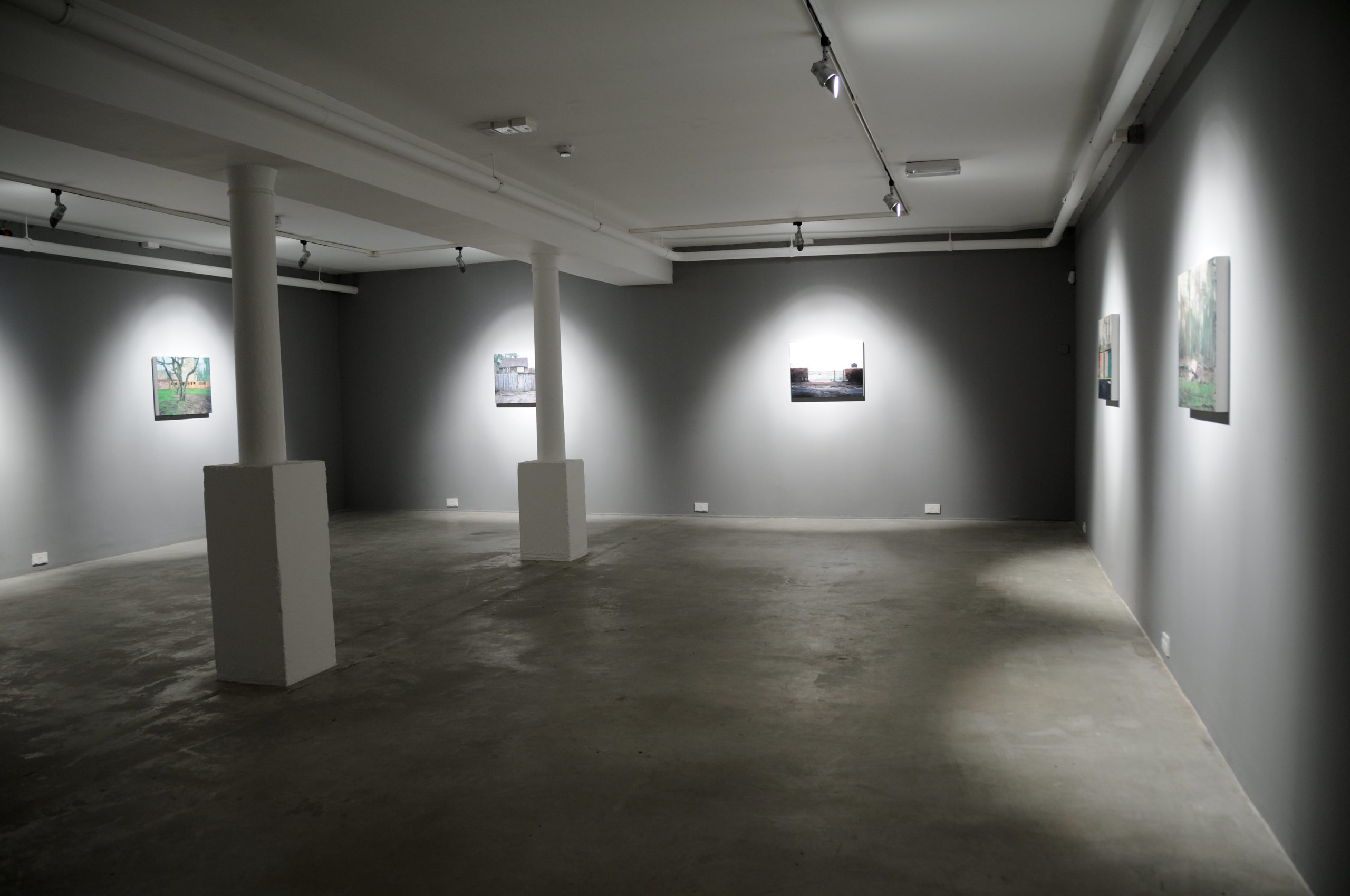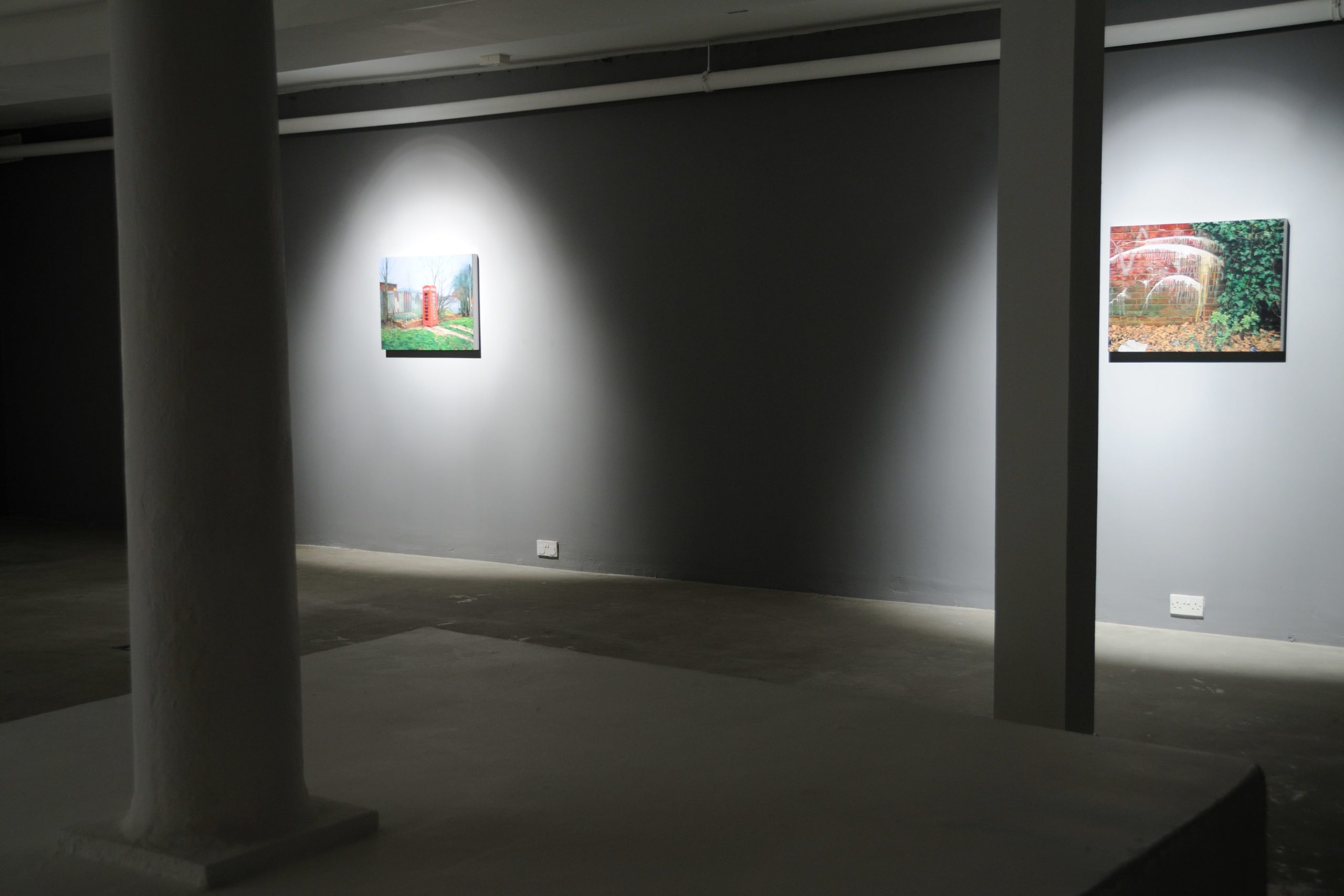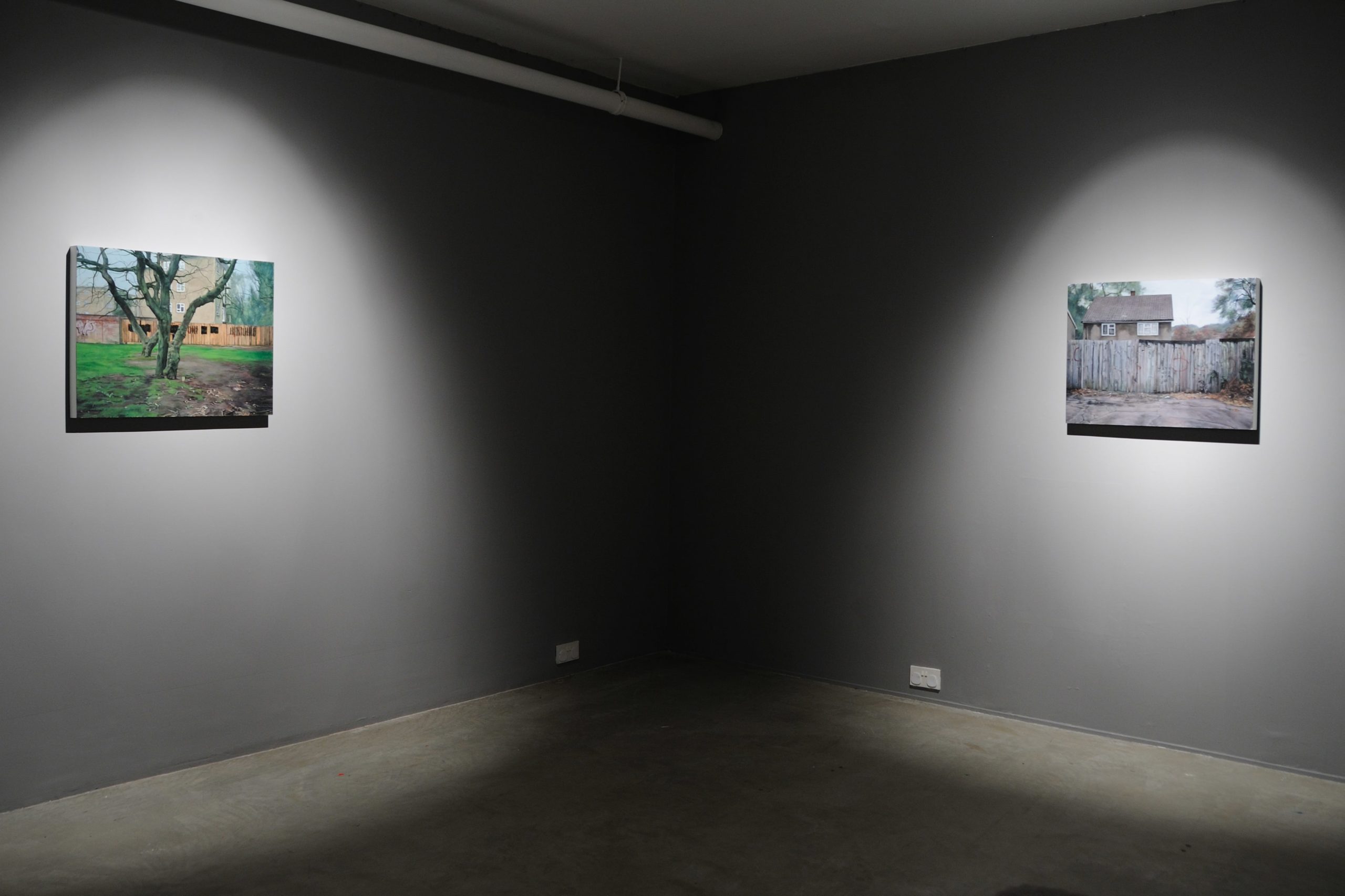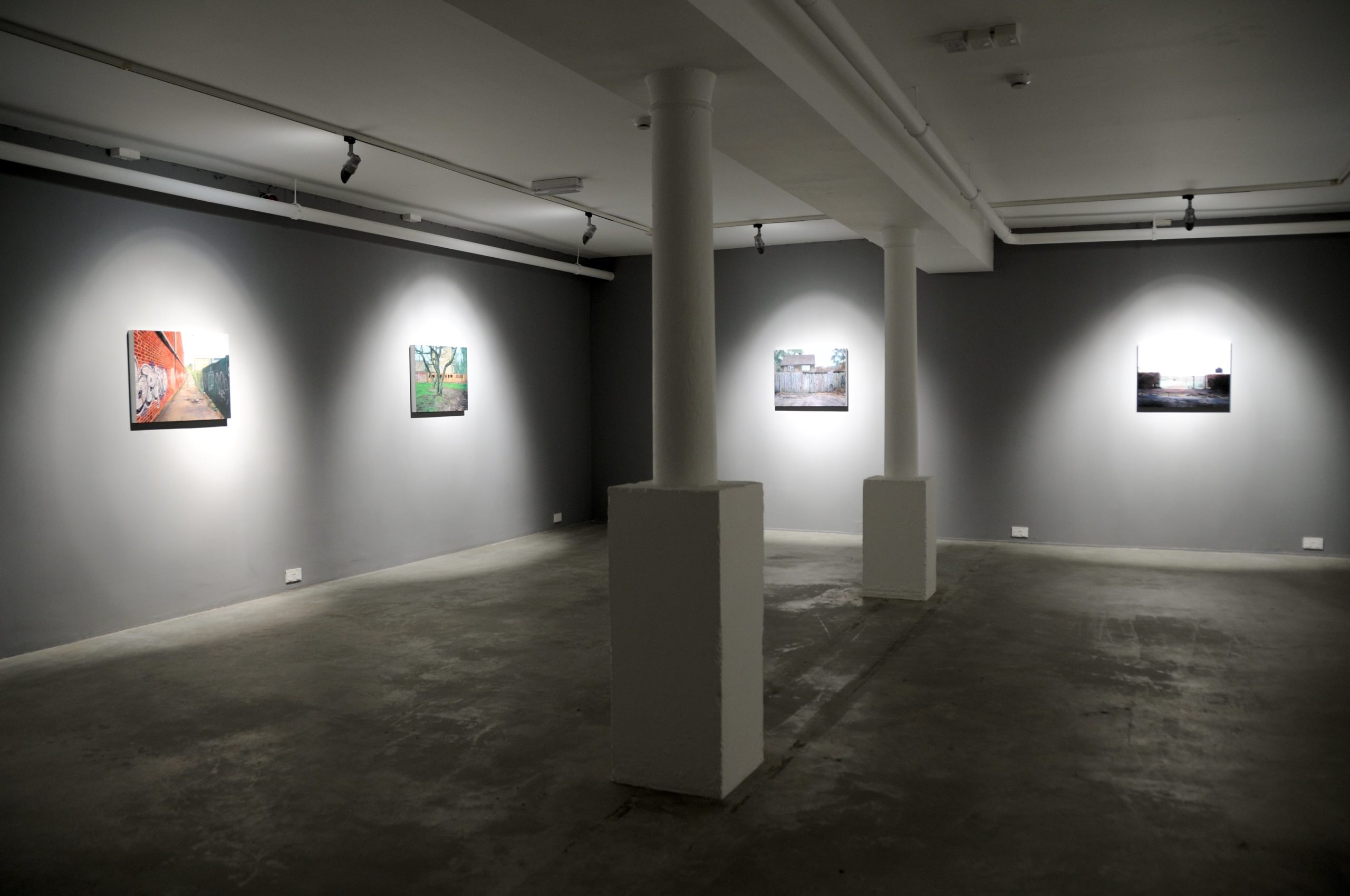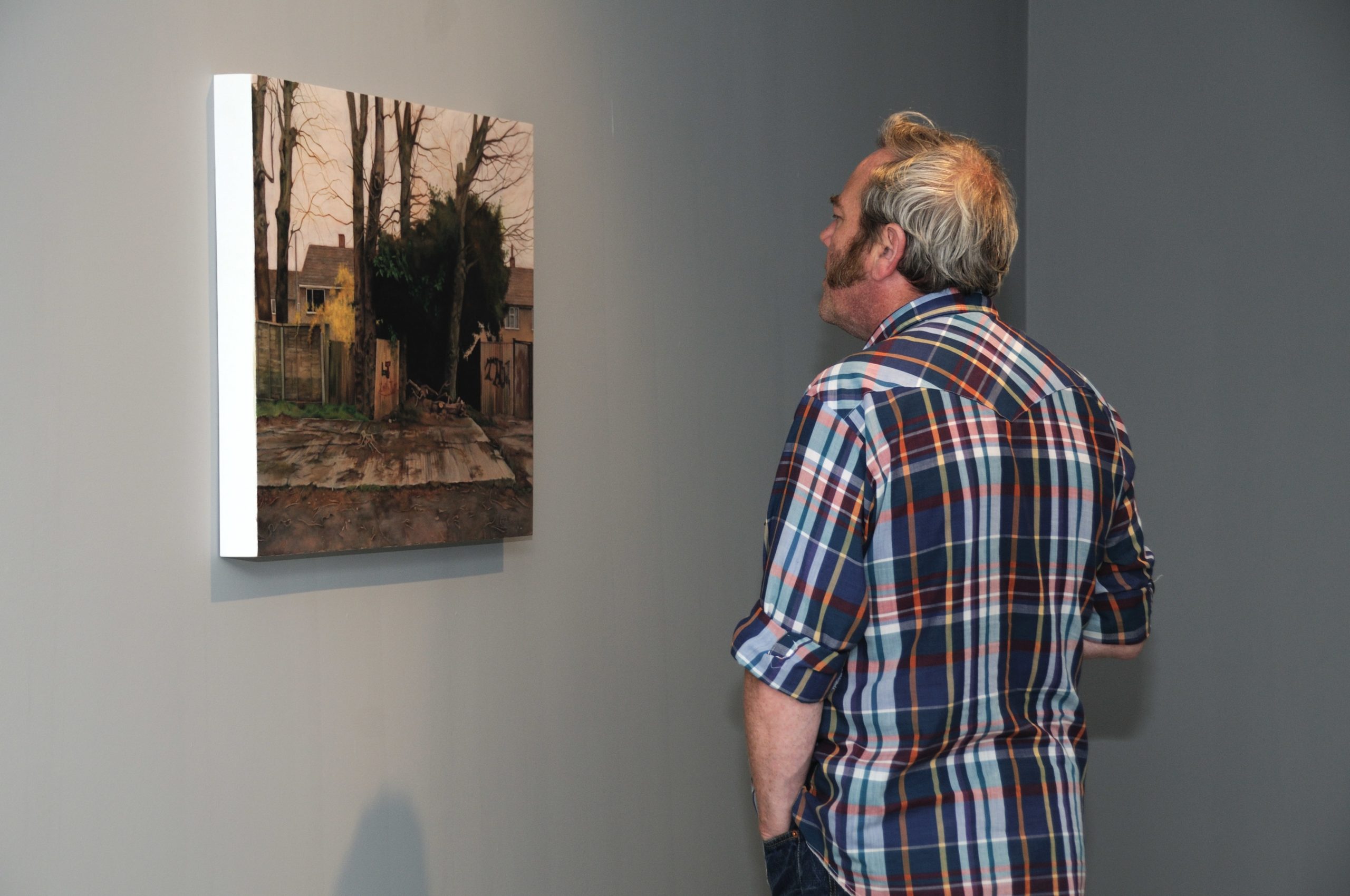Devon based artist George Shaw (born 1966 Coventry) is noted for his highly detailed paintings, naturalistic approach and English suburban subject matter. Shaw’s work has a unique appearance as his favoured medium is Humbrol enamel paints, more commonly used to paint Airfix models. Shaw who was brought up on a housing estate in the Midlands paints scenes from his childhood and adolescence. When talking about his work Shaw almost speaks of his act of painting as a catharsis of sorts.
“We can make a habit of haunting our own story, returning again and again to the same incidents and places and people – even conversations and emotions.
Is it worth holding onto that feeling I had at the back of the electric sub station? Should I mourn the fading of Forever written on a low wall?
As I slowly fail to recognise myself in this landscape so I begin to see it as it is and to begin slowly to say good-bye. For want of nothing better to do I am painting places as they become nothing, made up simply of time and longing. How quickly do we make the journey from first love to last words.”
The 12 paintings that span over Gallery 1 and 2 at Void communicate a lost suburban era of nostalgic longing. The rich surface of the Humbrol reflects the wet tarmac almost evoking a smell of damp streets. A window into another life, one which we all recognise, that stirs us into hankering for times past.
George Shaw Biography
George Shaw was born in Coventry, England in 1966. He studied at Sheffield Polytechnic and later the Royal College of Art, London. In 2001, Shaw was shortlisted for the Turner Prize for his solo exhibition ‘The Sly and Unseen Day’, a selection of works focusing on the Tile Hill housing estate, Coventry where he grew up.
As a painter, Shaw is known for his use of Humbrol enamel paint, normally the preserve of young model-makers, and while landscape as his subject, he focuses on the suburban surroundings of his childhood rather than the countryside. His paintings and drawings depict bus stops, phone boxes, pubs and graffiti against a backdrop of semidetached homes, blocks of flats and expanses of grey sky. This view of England is not always flattering, but it offers a detailed study of the changing nature of social housing; these unconsidered or neglected landscapes suddenly elevated by the poignancy of personal memory.
Acknowledgements
Void Gallery is supported by the Arts Council of Northern Ireland and Derry City Council.
